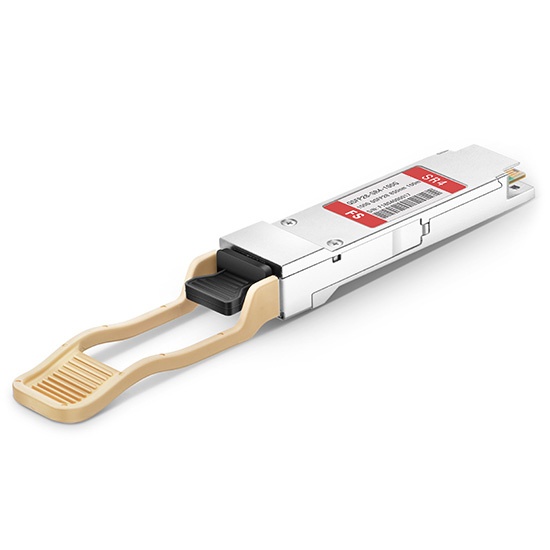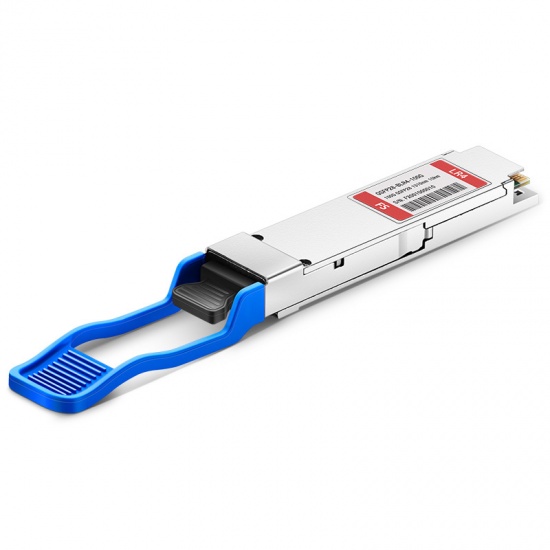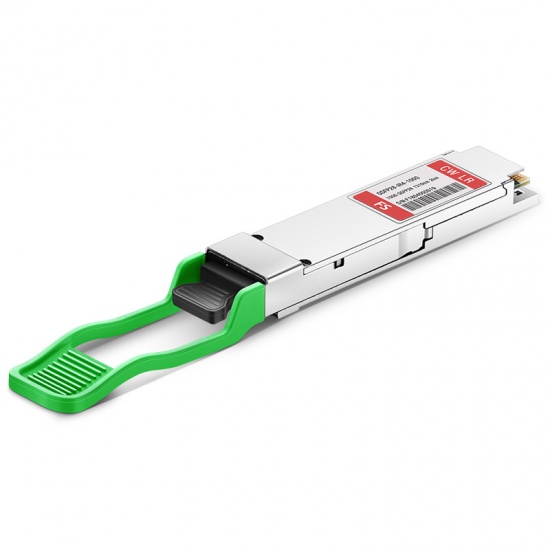100 Gigabit Ethernet is popular in the data center optics market this year. We have discussed much 100G optics in the previous articles. In this blog, we are going to make a comparison between the two main physical layer standards for short-reach interconnection—100GBASE-SR10 (CFP) and 100GBASE-SR4 (QSFP28 SR4) from several aspects.
100GBASE-SR4 VS 100GBASE-SR10: Form Factors Comparison
CFP is the typical representative form factor of 100GBASE-SR10. It is specified by an MSA (Multi-Source Agreement) between competing manufacturers. The CFP was designed after the SFP (Small Form-Factor Pluggable) interface, but is significantly larger to support 100 Gbps, using 10 x 10Gbps lanes.
QSFP28 is the latest 100G form factor. QSFP28 utilizes four 25G electrical lanes each to support the latest 100/50/25G transceivers and interconnects. Thus, it is the representative form factor of 100GBASE-SR4.
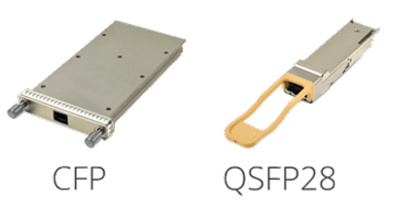
Result: QSFP28 form factor is more popular than CFP now, according to the surge shipment of QSFP28 optics.
100GBASE-SR4 VS 100GBASE-SR10: Size Comparison
Transceivers with 100GBASE-SR4 and 100GBASE-SR10 interface respectively correspond to QSFP28 and CFP. Thus they have a significant difference in size. See the picture below, CFP is much larger than QSFP28. Obviously, CFP is not much suitable for high-density applications. In contrast, QSFP28 increases front-panel density and decreases power and price per bit.
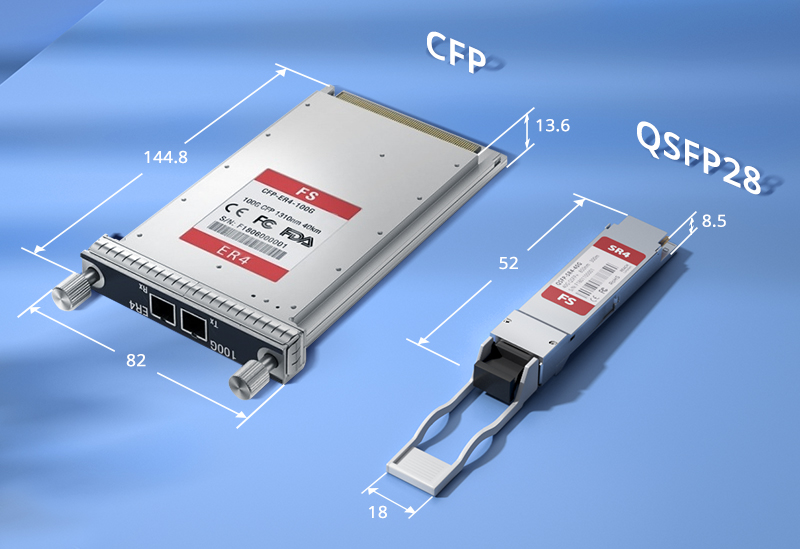
Result: As high density is becoming one of the trends of data center, QSFP28 (100GBASE-SR4) is much more suitable to meet this demand than CFP (100GBASE-SR10).
100GBASE-SR4 VS 100GBASE-SR10: Electrical and Optical Lanes Diagram
The following diagram shows the basic principles of 100GBASE-SR4 and 100GBASE-SR10:

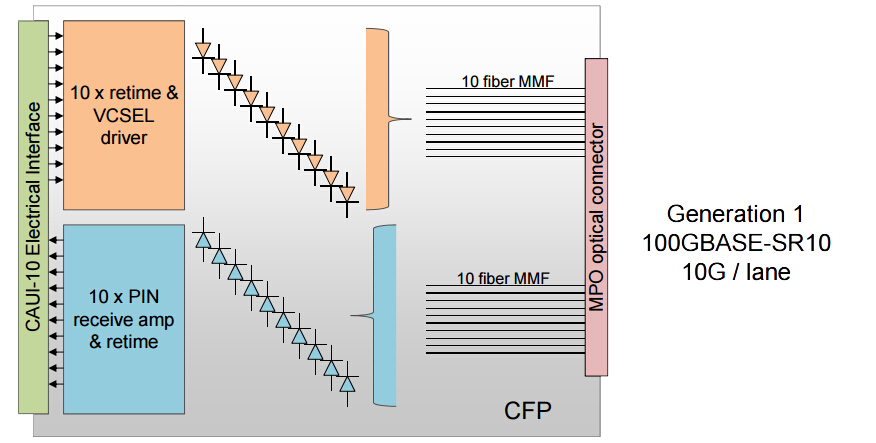
Result: 100GBASE-SR4 has higher speed per channel with less channels so that it can decrease the port density.
100GBASE-SR4 VS 100GBASE-SR10: Cables & Connectors Options
Both 100GBASE-SR4 and 100GBASE-SR10 optics use laser optimized multimode fiber (OM3/OM4) for transmission. But 100GBASE-SR4 optics (such as Cisco 100G-QSFP28-SR4) uses a 12-fiber standard QSFP MPO/MTP cable for connectivity (4*Tx and 4*Rx, each lane providing 25Gbps of throughput) while 100GBASE-SR10 optics use a 2x 12-fiber or 24-fiber strand MPO/MTP cable for connectivity (10*Tx and 10*Rx, each lane providing 10 Gbps of throughput).
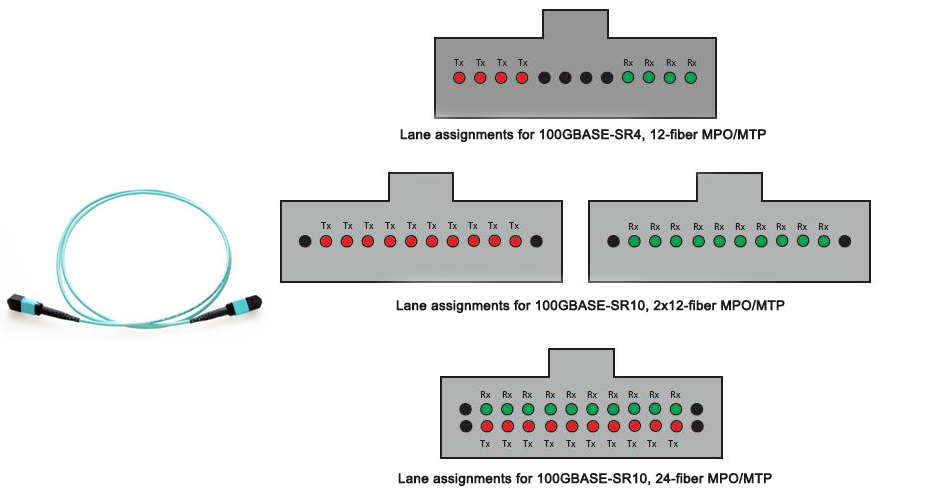
Because optics with 100GBASE-SR4 and 100GBASE-SR10 interface can be respectively breakout to 4x 25 Gbps and 10x 10 Gbps, it is easy to upgrade from 25GbE/10 GbE to 100 GbE using MPO/MTP to LC harness cable.
Result: 100GBASE-SR4 uses 12-fiber MPO/MTP while 100GBASE-SR10 uses two 12-fiber or one 24-fiber MPO/MTP. For 100G point-to-point interconnection, the 100GBASE-SR4 is more cost-effective. For network migration, 100GBASE-SR4 is also better since it has fewer breakout legs which greatly reduces the cost of cable management.
Summary
100GBASE-SR4 offers layout advantages to the host board implementer and substantial cable plant fiber count reduction while being competitive with 100GBASE-SR10 in cost and power consumption.
Related Article: 100G CFP vs QSFP28: When to Use Each?

